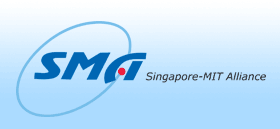Research Outline
High Aspect ratio (HAR) polymeric micro-arrays are ubiquitous in the MEMS industry and are gaining importance in the biomedical, micro-fluidic and micro-optics arena. HAR microstructures offer a variety of advantages since there is a higher ratio of active surface area to substrate surface area, leading to increased sensitivity and further miniaturisation. In addition, higher packaging density and higher throughput in continuous flow system are possible.
UV embossing for polymeric micro-patterning is an emerging replication technique with many unique qualities that satisfy the requirements for a simple setup and low cost fabrication with fast cycle time production. A multi-functional acrylate polymer mixture is dispensed over the mould and UV cured in a matter of seconds. The hardened resin is then peeled off at a small angle. In order to further enhance this duplication method for high aspect ratio (>15) production, ease of demoulding is highly desirable.
The motivation of this research project is to investigate the conditions necessary for successful demoulding. To achieve this, interfacial surface studies had been carried out to reduce surface energy of the moulds. Concurrently, polymer behaviour as a function of cure is also being investigated. Optimisation via numerical simulation using cohesive zone modelling is utilised to model the demoulding process.
|


